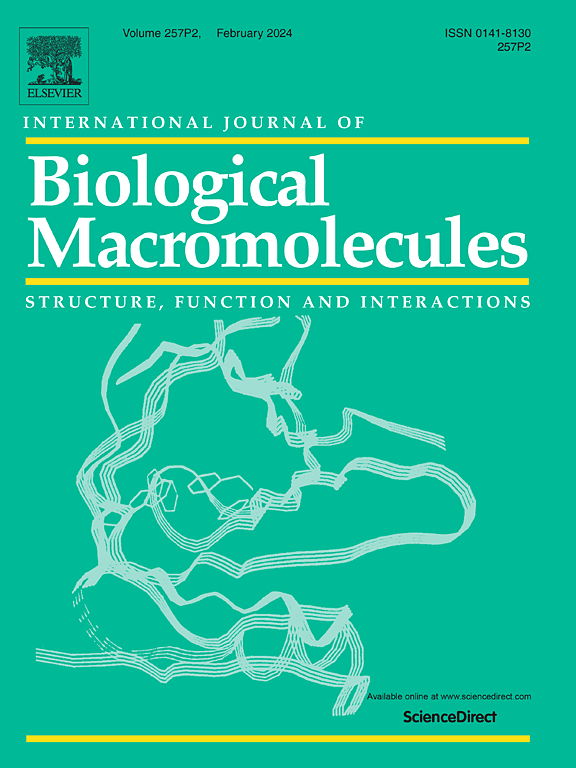Human tripartite motif-containing protein 71 NCL-1/HT2A/LIN-41 domain crystal structure and its potential natural inhibitors
IF 7.7
1区 化学
Q1 BIOCHEMISTRY & MOLECULAR BIOLOGY
International Journal of Biological Macromolecules
Pub Date : 2025-04-01
DOI:10.1016/j.ijbiomac.2025.142764
引用次数: 0
Abstract
TRIM71 NHL Domain is a critical driver of various cellular process and is dysregulated in several medical conditions like non-small cell lung cancer, hepatocellular carcinoma and congenital hydrocephalus. However, its pathways and binding with CDKN1A has not been well studied. To investigate its interaction with CDKN1A, we expressed TRIM71 NHL domain in SF9 (Spodoptera frugiperda) insect cells using the pFastBacTM HT B plasmid, was purified by size exclusion chromatography and its crystal structure was determined successfully (PDB ID: 9JUR). Fluorescence polarization (Kd = 0.42 ± 0.04 μM) and EMSA confirmed strong and specific binding to CDKN1A mRNA, indicating its role in repressing CDKN1A expression to promote cancer cell proliferation. To further delve into its therapeutic implication, we screened a library of 2517 phytochemicals from 48 medicinal plants to identify potential natural inhibitors of the TRIM71 NHL domain. Epigallocatechin Gallate and Cyanidin 3-O-galactoside demonstrated binding affinities of −9.1 kcal/mol and −9.0 kcal/mol, respectively, while SPR confirmed their affinities with Kd values of 3.2 μM and 17.3 μM, accordingly. Molecular dynamics simulations confirmed protein-ligand complexes stability. In summary, human TRIM71 NHL domain crystal structure provides a foundation for understanding its structural features while exploring two potential inhibitors for therapeutic applications.
求助全文
约1分钟内获得全文
求助全文
来源期刊
CiteScore
13.70
自引率
9.80%
发文量
2728
审稿时长
64 days
期刊介绍:
The International Journal of Biological Macromolecules is a well-established international journal dedicated to research on the chemical and biological aspects of natural macromolecules. Focusing on proteins, macromolecular carbohydrates, glycoproteins, proteoglycans, lignins, biological poly-acids, and nucleic acids, the journal presents the latest findings in molecular structure, properties, biological activities, interactions, modifications, and functional properties. Papers must offer new and novel insights, encompassing related model systems, structural conformational studies, theoretical developments, and analytical techniques. Each paper is required to primarily focus on at least one named biological macromolecule, reflected in the title, abstract, and text.

 求助内容:
求助内容: 应助结果提醒方式:
应助结果提醒方式:


